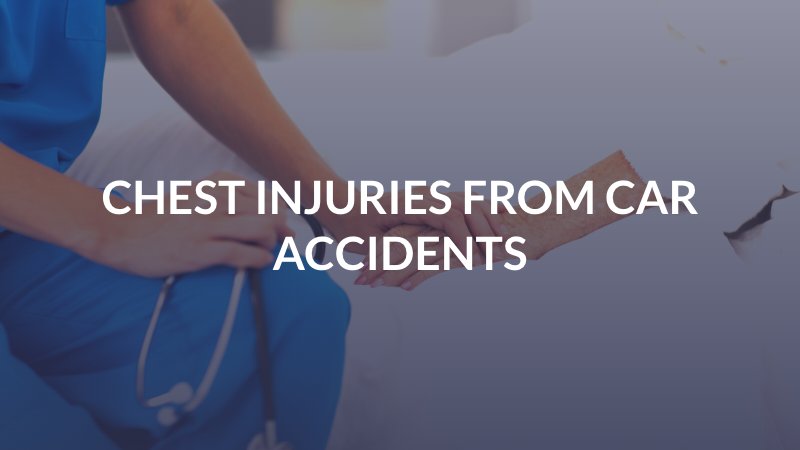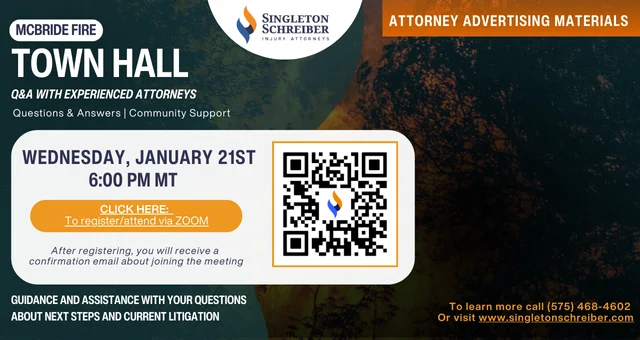Any car accident - including a low-impact collision - can cause victims to suffer serious physical injuries, including trauma to the chest. In fact, according to the National Highway Traffic Safety Administration (NHTSA), 80 percent of all car accident victims experience a head or chest injury. If you've suffered a chest injury in an accident, make sure to contact an experienced injury lawyer in Albuquerque.

How Can a Car Accident Cause Injuries to the Chest?
Most chest injuries are the result of blunt force trauma, which can happen when:
- A driver’s chest hits the steering wheel
- Airbags deploy and hit vehicle occupants
- A passenger is thrown into the dashboard
- Seat belts tighten around the chest upon impact
- Passengers are struck by flying debris
- Vehicle occupants are ejected from the car and make hard contact with the pavement or another vehicle
While penetrating chest injuries are less common in car accidents, they can still occur. Penetrating chest injuries, which involve piercing the chest, typically occur when a vehicle occupant is struck by a sharp object or impaled on vehicle wreckage.
What Are the Most Common Types of Car Accident Chest Injuries?
Where were you sitting in the car when it crashed? Were you wearing your seat belt? Did the airbags deploy? How fast was the vehicle traveling upon impact?
All of these things will influence what types of chest injuries a crash victim might suffer, as well as how severe those injuries are.
Some of the most common crash-related chest injuries include:
Broken Ribs
Even though the ribs are some of the strongest bones in the body, they’re often no match for the sheer force of impact of a car accident. Bones in the ribcage can begin to break when 700 pounds of force are applied. For context, a person weighing 175 pounds who’s involved in a crash at just 15 MPH will experience over 2,000 pounds of force on their body. This is more than enough to fracture one or more ribs if the force is absorbed by the chest.
Organ Damage
The ribcage houses some of our body’s vital organs, including the heart, lungs, liver, spleen, and diaphragm. Blunt force trauma or penetrating injuries caused by broken ribs can make these organs susceptible to trauma, including hematomas and lacerations.
Internal Bleeding
Internal bleeding, or hemorrhaging, can occur when blood vessels in the chest are damaged in a car accident. If internal bleeds are not treated and controlled promptly, they can be fatal.
What Are the Signs of a Chest Injury?
Seek prompt medical care if you suffer a blow to the chest in a New Mexico car accident, especially if you notice any of these signs or symptoms of a chest injury:
- Shortness of breath
- Pain, especially when moving your arms and/or shoulder
- Pain while breathing
- Tenderness in the back and chest
- Discoloration or bruising
- Coughing up blood
- Muscle spasms
Car accident chest injuries in New Mexico can be painful, debilitating, and costly. Depending on the severity of the trauma of the chest, a victim may suffer life-long consequences.
Fortunately, if your chest injuries happened because someone else was negligent, you’ll have the opportunity to demand compensation for your crash-related damages. The experienced Albuquerque car accident attorneys at Singleton Schreiber can help you fight for a maximum recovery.
Our award-winning advocates represent clients in Albuquerque, Las Vegas, Los Lunas, Mora, and throughout the state of New Mexico. Contact our law office to set a time for a free consultation now.
About Car Accidents
- Car Accident Overview
- Damages Available in Car Accident Cases
- Getting a Car Accident Report in Albuquerque
- Insurance Minimums
- Liability in Car Accidents
- Steps to Take After a Car Accident
- Time Limits for Car Accident Claims
- What is My Car Accident Claim Worth?
Car Accident Injuries
- Airbag Injuries
- Bone Fractures
- Bruising and Contusions
- Chest Injuries
- Delayed Injuries
- Low-Impact Injuries
- Nerve Damage
- Seatbelt Injuries
- Soft Tissue Injuries
Types of Car Accidents
- Aggressive Driving Accidents
- Dangerous Road Accidents
- Distracted Driving Accidents
- Drowsy Driving Accidents
- Drunk Driving Accidents
- Fatal Accidents
- Head-On Collisions
- Highway Accidents
- Intersection Accidents
- Rear-End Accidents
- Rollover Accidents
- Speeding Accidents
- Weather Related Accidents
- Work Zone Accidents




